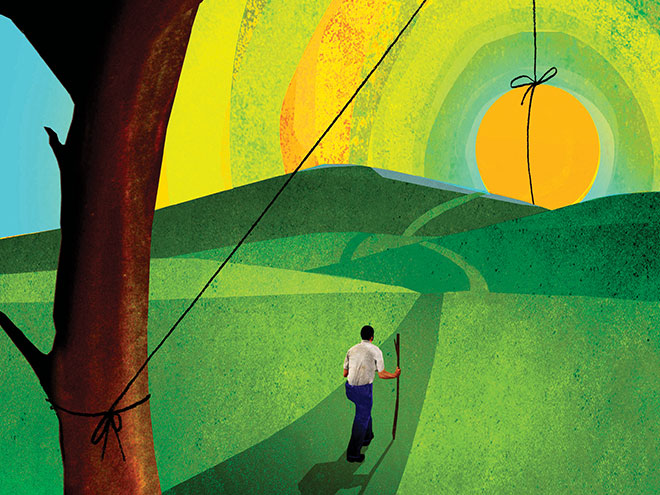Daylight saving time is something you encounter twice a year, but may not know much about. It is an effort to alter human activities to preindustrial patterns of living in which the sun exerted far more control over our daily behavior.
The modern concept of daylight saving time owes its origins to George Hudson, a New Zealand entomologist. In 1895, he proposed the idea of setting clocks forward in the spring so that he could maximize the amount of sunlight hours available to collect bugs. Ten years later, the idea would be picked up independently by a British citizen named William Willett, who proposed the idea of daylight saving time in Britain so he could engage in the activity that he most enjoyed: playing golf. Willett's daylight saving time plan never passed Parliament. The idea might have ended there had it not been for World War I.
During the war, the German government enacted daylight saving time in an attempt to conserve coal and electricity for the war effort. Germany's ally, Austria-Hungary, adopted daylight saving in April 1916, forming the first nationwide practice of daylight saving time. Britain followed a month later; the United States adopted the practice in 1918. After the war was over, however, all of these countries reverted back to their normal system of keeping time.
One of the most common misconceptions about daylight saving time is that American farmers advocated for it. In fact, the practice tended not to be popular with them. They argued against it during World War I and actively lobbied to see it repealed when the war ended in 1918. Longer summer months made it more difficult for farmers to undertake their work. Hired hands typically went home at 5 o'clock in any event, thus wasting daylight hours. Moreover, the cows had to be milked at set times that were regulated by their biological clocks rather than artificial time.
With the onset of World War II, daylight saving time was reintroduced in Europe and the United States. Three months after the end of the war, it was discontinued in America on a national level. Instead, state, regional, and local governments were allowed to regulate the start and end dates for their local daylight saving time. During the 1950s and 1960s this would lead to what one national magazine called "the chaos of time." By 1965, in the state of Iowa alone there were 23 different start and end times for daylight saving. That same year, start and end dates in the Twin Cities of Minneapolis and St. Paul were off by two weeks.
As the result of all this confusion, the U.S. Congress passed the Uniform Time Act in 1966, establishing daylight saving time regulations as we know them today. The act established uniform start and end times for daylight saving across the United States while allowing individual states to opt out of the system altogether. Indiana opted out until 2006. Today, Arizona is the only state not to participate.
So what's the point of daylight saving time? Some studies have shown that instituting daylight saving time reduces energy costs in summer months; with people spending more time outdoors, they use less electricity at home. Other studies have shown that falling back in the colder months leads to an increase in energy consumption. Either way, it's probably a wash. The most important thing to remember is that whether you choose to use your extra time collecting bugs, playing golf, or waging war, don't forget to set your clocks accordingly.
– Scott W. Palmer




